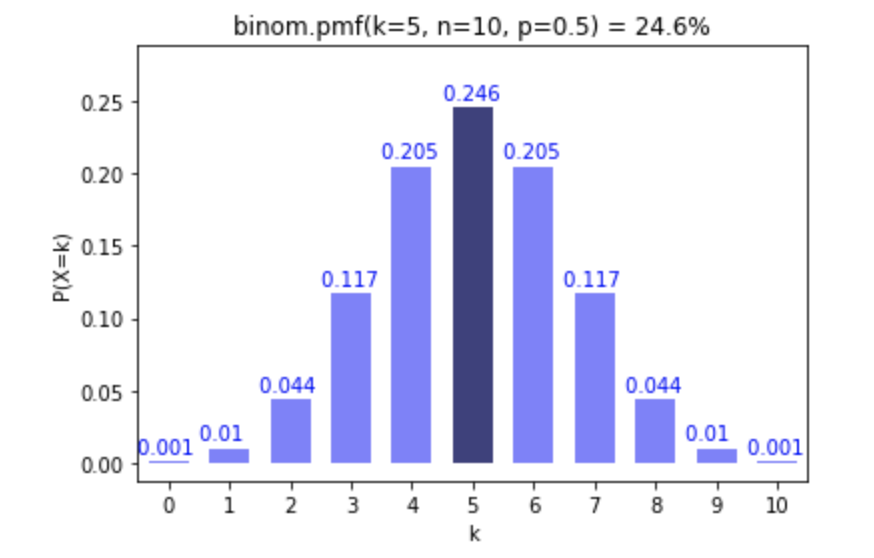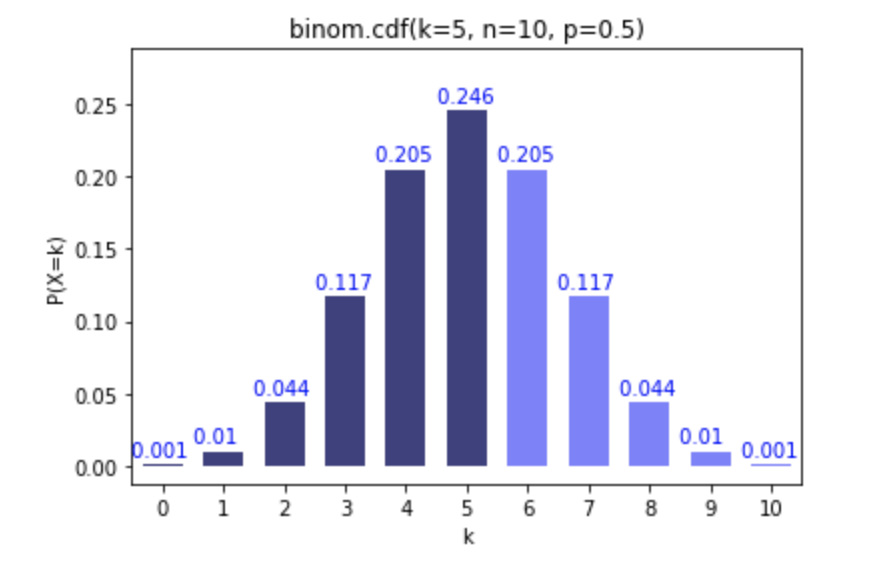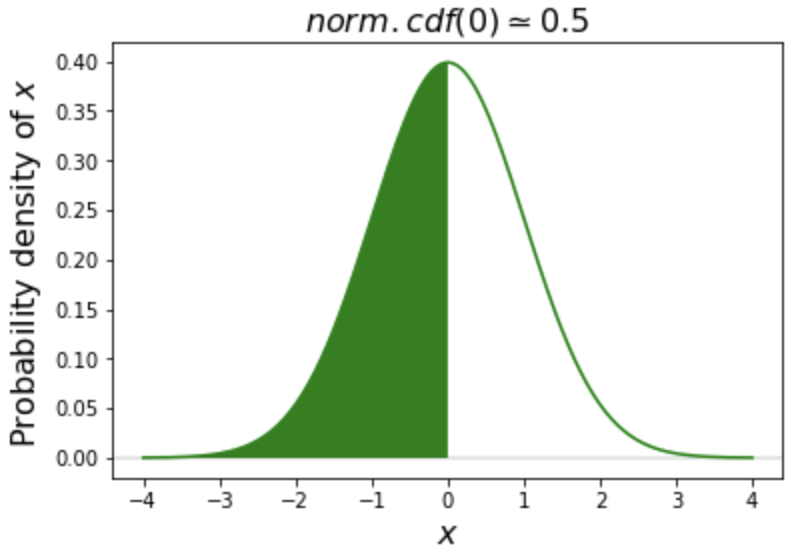Probability mass and distribution functions
Foundations of Probability in Python

Alexander A. Ramírez M.
CEO @ Synergy Vision
Probability mass function (pmf)
$$ $$
$$ binomial.pmf(k, n, p) = \binom{n}{k}p^k(1-p)^{n-k} $$
Probability mass function (pmf)
$$ $$
$$ binomial.pmf(k, n, p) = \color{red}{\binom{n}{k}}p^k(1-p)^{n-k} $$
Probability mass function (pmf) (Cont.)
$$ $$
$$ binomial.pmf(k, n, p) = \binom{n}{k}\color{red}{p^k}(1-p)^{n-k} $$
Probability mass function (pmf) (Cont.)
$$ $$
$$ binomial.pmf(k, n, p) = \binom{n}{k}p^k\color{red}{(1-p)^{n-k}} $$

Probability mass function (pmf) (Cont.)
$$ $$
$$ binomial.pmf(k, n, p) = \binom{n}{k}p^k(1-p)^{n-k} $$
In Python:
binom.pmf(k, n, p)
Calculating probabilities with `binom.pmf()`
# Probability of 2 heads after 10 throws with a fair coin
binom.pmf(k=2, n=10, p=0.5)
0.04394531249999999
# Probability of 5 heads after 10 throws with a fair coin
binom.pmf(k=5, n=10, p=0.5)
0.24609375000000025
Calculating probabilities with binom.pmf() (Cont.)
# Probability of 50 heads after 100 throws with p=0.3
binom.pmf(k=50, n=100, p=0.3)
1.3026227131445298e-05
# Probability of 65 heads after 100 throws with p=0.7
binom.pmf(k=65, n=100, p=0.7)
0.0467796823527298
Probability distribution function (cdf)
$$ $$
$$ binomial.cdf(k, n, p) = \binom{n}{0}p^0(1-p)^{n} + \binom{n}{1}p(1-p)^{n-1} + ... + \binom{n}{k}p^k(1-p)^{n-k} $$
Probability distribution function (cdf) (Cont.)
$$ $$
$$ binomial.cdf(k, n, p) = \color{red}{\binom{n}{0}p^0(1-p)^{n}} + \binom{n}{1}p(1-p)^{n-1} + ... + \binom{n}{k}p^k(1-p)^{n-k} $$
Probability distribution function (cdf) (Cont.)
$$ $$
$$ binomial.cdf(k, n, p) = \binom{n}{0}p^0(1-p)^{n} + \color{red}{\binom{n}{1}p(1-p)^{n-1}} + ... + \binom{n}{k}p^k(1-p)^{n-k} $$
Probability distribution function (cdf) (Cont.)
$$ $$
$$ binomial.cdf(k, n, p) = \binom{n}{0}p^0(1-p)^{n} + \binom{n}{1}p(1-p)^{n-1} + ... + \color{red}{\binom{n}{k}p^k(1-p)^{n-k}} $$
Cumulative distribution function (cdf)
$$ $$

$$ $$

Cumulative distribution function (cdf) (Cont.)
$$ $$ $$ binomial.cdf(k, n, p) = \binom{n}{0}p^0(1-p)^{n} + \binom{n}{1}p(1-p)^{n-1} + ... + \binom{n}{k}p^k(1-p)^{n-k} $$
In Python:
binom.cdf(k=1, n=3, p=0.5)
Calculating cumulative probabilities
# Probability of 5 heads or less after 10 throws with a fair coin
binom.cdf(k=5, n=10, p=0.5)
0.6230468749999999
# Probability of 50 heads or less after 100 throws with p=0.3
binom.cdf(k=50, n=100, p=0.3)
0.9999909653138043
Calculating cumulative probabilities (Cont.)
# Probability of more than 59 heads after 100 throws with p=0.7
1-binom.cdf(k=59, n=100, p=0.7)
0.9875015928335618
# Probability of more than 59 heads after 100 throws with p=0.7
binom.sf(k=59, n=100, p=0.7)
0.9875015928335618
Let's calculate some probabilities
Foundations of Probability in Python

